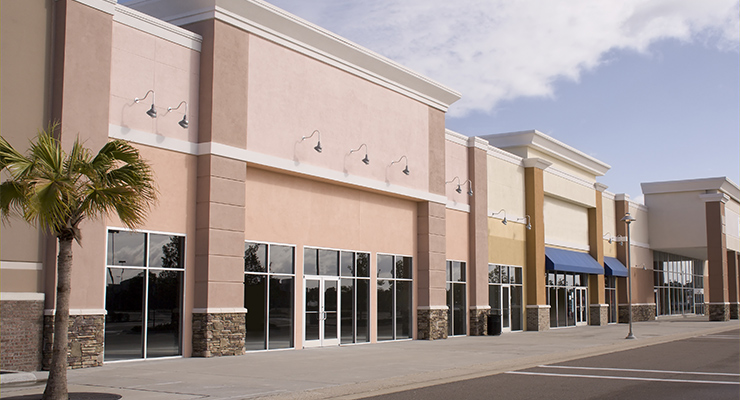
By Matt Schlegel, Product Manager, Bosch Home Comfort Group
Building management professionals are increasingly looking for ways to reduce the operational costs and environmental impact of the buildings they manage. According to the World Economic Forum, buildings continue to be among the biggest users of energy and a significant source of greenhouse gas emissions, with the latest data showing that buildings consume 32% of global energy and account for 34% of global CO₂ emissions.1
As fluctuating energy prices and net zero initiatives continue, building management professionals are motivated to explore new solutions. A new option for commercial heating has emerged to help lower operational costs and reduce emissions – dual fuel rooftop units (RTUs). These systems can help achieve both goals, making them an attractive option for commercial applications.
Dual fuel RTUs include an electric heat pump and gas furnace packaged into a rooftop unit. The combined solution offers the high energy efficiency of the heat pump for cooling and heating during most of the year, while utilizing a gas furnace to offset a heat pump’s reduced capacity and efficiency in colder temperatures. If outdoor temperatures drop below the programmed balance point, the RTU transitions to the gas furnace as supplemental heat to maintain efficiency and comfort. The Department of Energy estimates that dual fuel RTUs have the potential to reduce energy costs in commercial buildings by as much as 50% compared to traditional RTU systems.2
How dual fuel systems work
A dual fuel system is simple in concept, combining existing designs for heat pumps and gas furnaces into a single unit capable of using either electricity or natural gas as the fuel source for heat generation. By combining a heat pump with a furnace, dual fuel systems are designed to run the most efficient fuel based on outdoor conditions. During the milder temperatures of spring and fall and portions of winter, the heat pump delivers efficient heating by transferring warmth from outside air into the building. When temperatures drop too low for the heat pump to operate with sufficient capacity and efficiency, the system automatically switches to the gas furnace.
To maximize efficiency and comfort, leading dual fuel systems feature intelligent controls that seamlessly transition between fuel sources based on a set balance point. Configured in the field by the installing technician, the balance point is the outdoor temperature at which the unit will switch from heat pump heating to gas furnace heating and is determined by facility goals and the environment.
Some manufacturers provide tools to help determine a balance point that prioritizes emissions or comfort. For example, the YORK Dual Fuel Heat Pump Operating Cost and Emissions Estimator helps project annual energy costs and emissions based on a specific balance point. The estimator works with the YORK® Sun™ Pro and Sun™ Choice Dual Fuel Rooftop Units (RTUs), which include intelligent controls.

Dual fuel advantages are driving adoption
Adoption of dual fuel RTUs for commercial applications is growing, largely due to the long-term utility cost savings. As energy prices continue to increase, building managers are discovering that the ability to automatically switch between fuel sources based on the outdoor temperature is a distinct advantage for heating large spaces more efficiently without compromising comfort.3
Financial incentives and rebates that offset upfront costs are also driving adoption. Organizations can lower the initial investment in a dual fuel system through local, state and federal government energy programs, along with incentive programs offered by some utility companies.
Dual fuel systems are also becoming popular with contractors. Because the heat pump and furnace in a dual fuel RTU remain largely the same as traditional units, the learning curve for installation, commissioning and service is shorter than with most new equipment. Additionally, no significant electrical system upgrades are required for most applications and situations.
A smarter, more efficient solution for cold climates
Intelligent dual fuel RTUs offer the best of both worlds: efficient, all-electric heating and cooling and supplemental gas heat when needed. Occupants enjoy year-round comfort, while building owners benefit from enhanced energy efficiency, reduced operating costs and progress toward decarbonization goals.
For more information about YORK® Sun™ Pro and Sun™ Choice Dual Fuel RTUs, contact YORK today.
1. World Economic Forum, “Why the building sector’s emissions milestone requires data-driven reinforcement” https://www.weforum.org/stories/2025/05/building-construction-emissions-data
2. Department of Energy, Better Buildings (2025), “Commercial building heat pump accelerator,” https://betterbuildingssolutioncenter.energy.gov/accelerators/commercial-building-heat-pump
3. Data Horizon Research, “Dual Fuel Heating Systems Market” https://datahorizzonresearch.com/dual-fuel-heating-systems-market-14878
Sponsored content by Bosch



